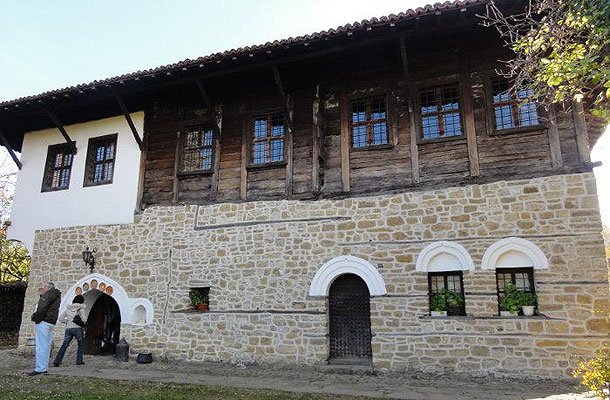No one has doubts on a holidaymaker’s expectations – nature, fresh and, if possible, healing air, attractive landmarks… and why not some luxury, even if we talk about rural tourism. Let’s add to this some full with surprises local cuisine. Well, Arbanasi is the place for all of this.
The small settlement is situated amidst some rocky highlands, just 5 km away from Bulgaria’s ancient capital of Veliko Tarnovo. The place can show about a hundred old houses that have preserved the spirit of their time behind the tall stone fences, almost covered with purple and redolent lilacs over the season. Tourists can stop by for a short weekend on their way to the seaside or spend an unforgettable week at one of the guest houses of the village. Of course, the use of a professional tour guide is recommended for all of you, who would love to get into the history and spirit of the place. Caretaker at the Regional Museum of History in Veliko Tarnovo Sonya Petrova says that each guest of Arbanasi can find what he or she is looking for – whether it is an attractive spot for a tasty outdoor meal under the sound of authentic folklore music, or it is a unique place for sightseeing, with its old churches and houses. The Konstantsalieva House is one of the most visited places and Mrs. Petrova gives us details on this museum of old Arbanasi lifestyle:

© Photo: wikimapia.org
“One can see here the wealth of those Arbanasi traders,” she says. “For instance, guests can take a look at the woman in labor room, where the young mother spent 40 days with the newly born baby. Nobody, but the wise woman had the right to enter this room over that period. After that the mother would go to church first and then could re-enter her family. Visitors can also see the process of bread-making at the kitchen. The place also has a living room for the summer, one for the winter and a dining room, where the whole family used to eat. Tourists may spot the special loops, where meat delicacies used to hang and those never went bad due to the clean Arbanasi air. There was some isolation, made of beams and straw between the first and the second floor – thus the house used to be cool in summer and warm in winter.”

© Photo: imagesfrombulgaria.com
Arbanasi visitors can also take a walk to one of the 7 well-preserved churches or to the two acting monasteries. This is how Sonya Petrova describes the Nativity Church:
“It a unique monument from end-16th and the beginning of the 17th century with really remarkable murals. There is not an empty square centimeter and not a single scene is doubled. Moreover, those are really rare for that iconographic period. Nativity was the residence of Tarnovo metropolitans in the 17th century, according to archaeologists and the murals themselves prove that,” Mrs. Petrova says.

© Photo: BGNES
Everyone can find his or her thing in Arbanasi’s simple life. Local private hotels are cozy and nice. The scent of lilac can be felt over the spring in the restaurants. Fans of extreme sports are not forgotten either – those can visit the horse riding center of the village, where both beginners and experienced riders are welcome. The latter can go along one of the five riding tours offered. A horse-riding picnic or a walk with a carriage can also be very attractive experiences among nature. For the winter those are replaced by an adventure with sledge. Tourist groups from Australia, New Zealand, North and South America visit the place and those wish to return here again.
English version: Zhivko Stanchev
An architectural and cultural monument of national importance, the church of Saint George the Victorious in the town of Kyustendil is located at the foot of the nearby Osogovo Mountain, in Kolusha neighbourhood. The study and restoration of..
We do not need to travel thousands of kilometers to reach holy Christian places and “drink from the miraculous well” of Orthodox faith. Hundreds of churches and monasteries were built on Bulgarian territory with the faith and the hope..
A hard-to-reach fortress rose on a solitary ridge, which was towering above the Asenitsa River. This place built high in the rocks was once sheltering Thracians, Romans, Byzantines, Western Europeans, Bulgarians and Ottomans. One..

+359 2 9336 661
